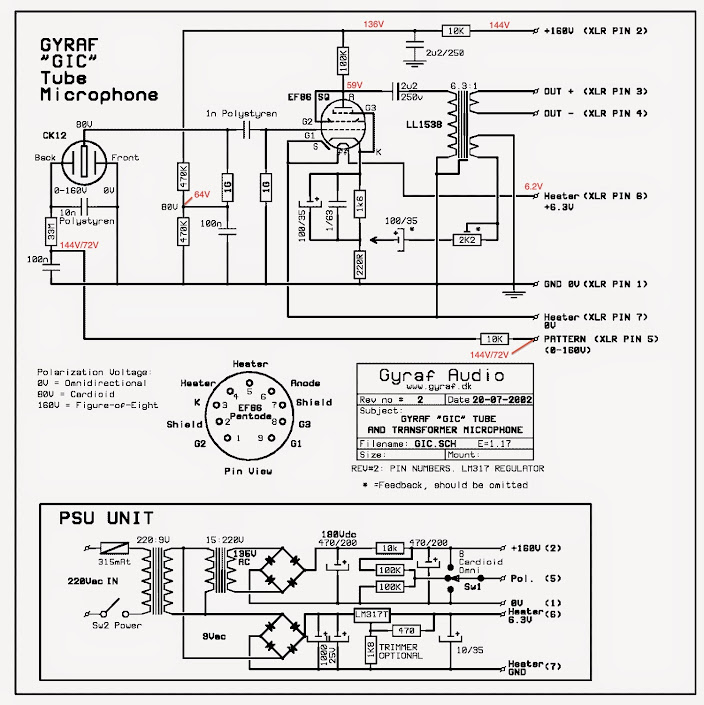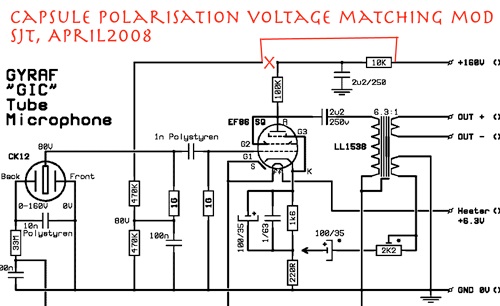Upon measuring voltages without the capsule connected I think I've got a problem.

As you can see the voltages of the capsule's backplate and the polarisation voltage are not exactly the same, at the voltage divider I'm reading +/-64V and at the top of 33M resistor 72.8V.
I've found a workaround by someone one the WWW but I don't know if it's the right solution.

Should I just try it out?
Sorry for the total noobness :
I would love to hear your insights.
Cheers
Moshe

As you can see the voltages of the capsule's backplate and the polarisation voltage are not exactly the same, at the voltage divider I'm reading +/-64V and at the top of 33M resistor 72.8V.
I've found a workaround by someone one the WWW but I don't know if it's the right solution.

Should I just try it out?
Sorry for the total noobness :
I would love to hear your insights.
Cheers
Moshe
























![Soldering Iron Kit, 120W LED Digital Advanced Solder Iron Soldering Gun kit, 110V Welding Tools, Smart Temperature Control [356℉-932℉], Extra 5pcs Tips, Auto Sleep, Temp Calibration, Orange](https://m.media-amazon.com/images/I/51sFKu9SdeL._SL500_.jpg)










